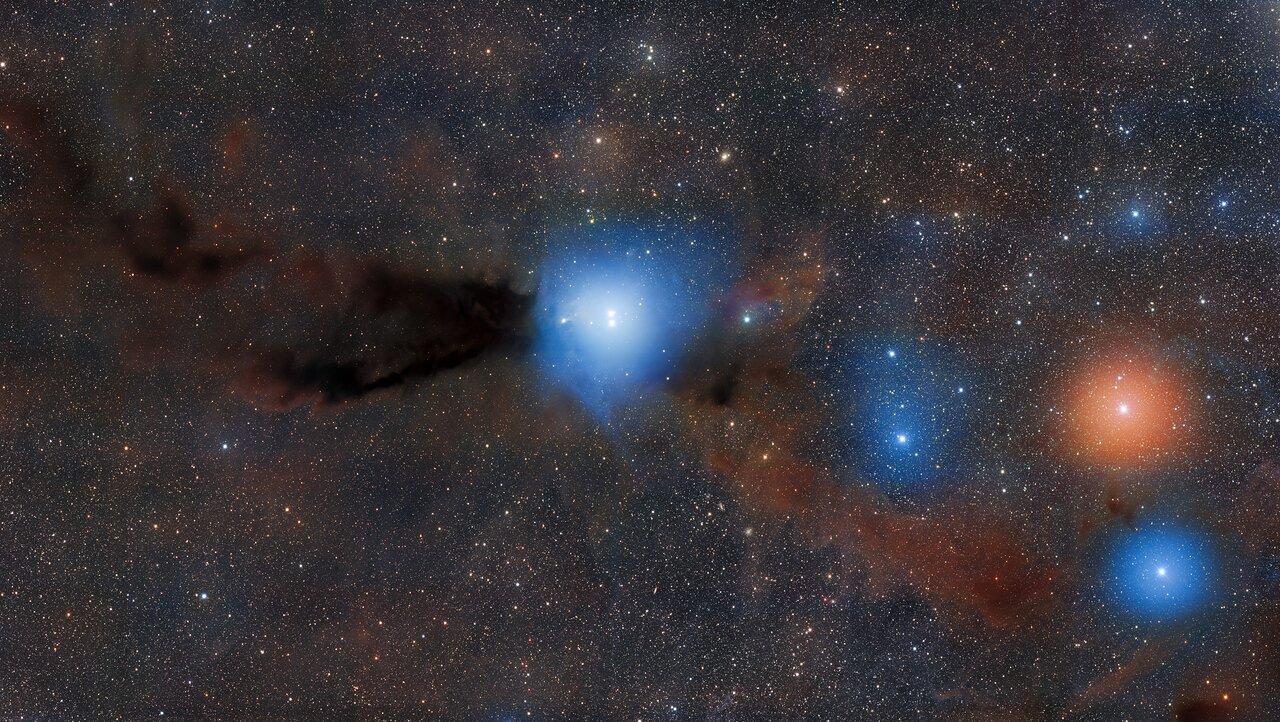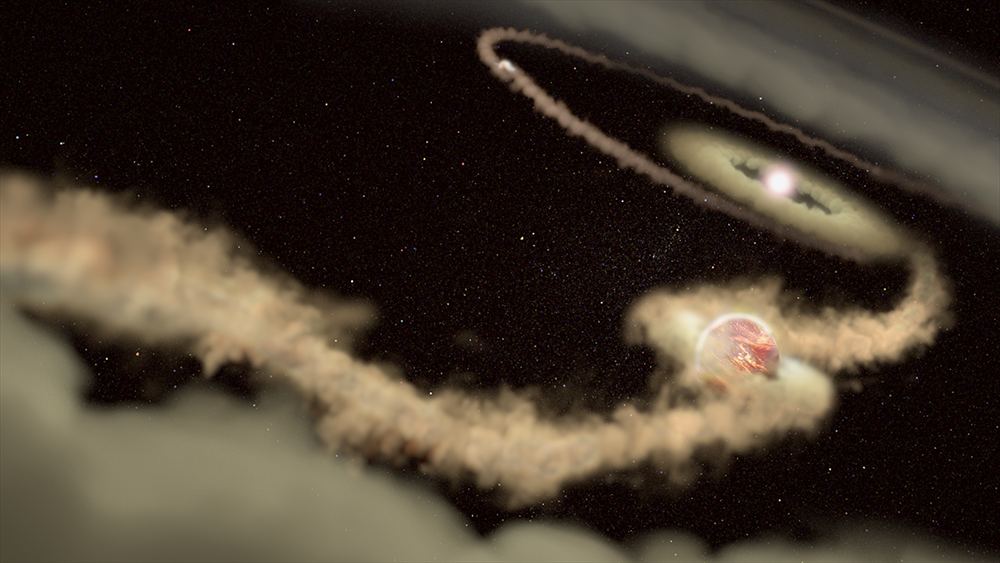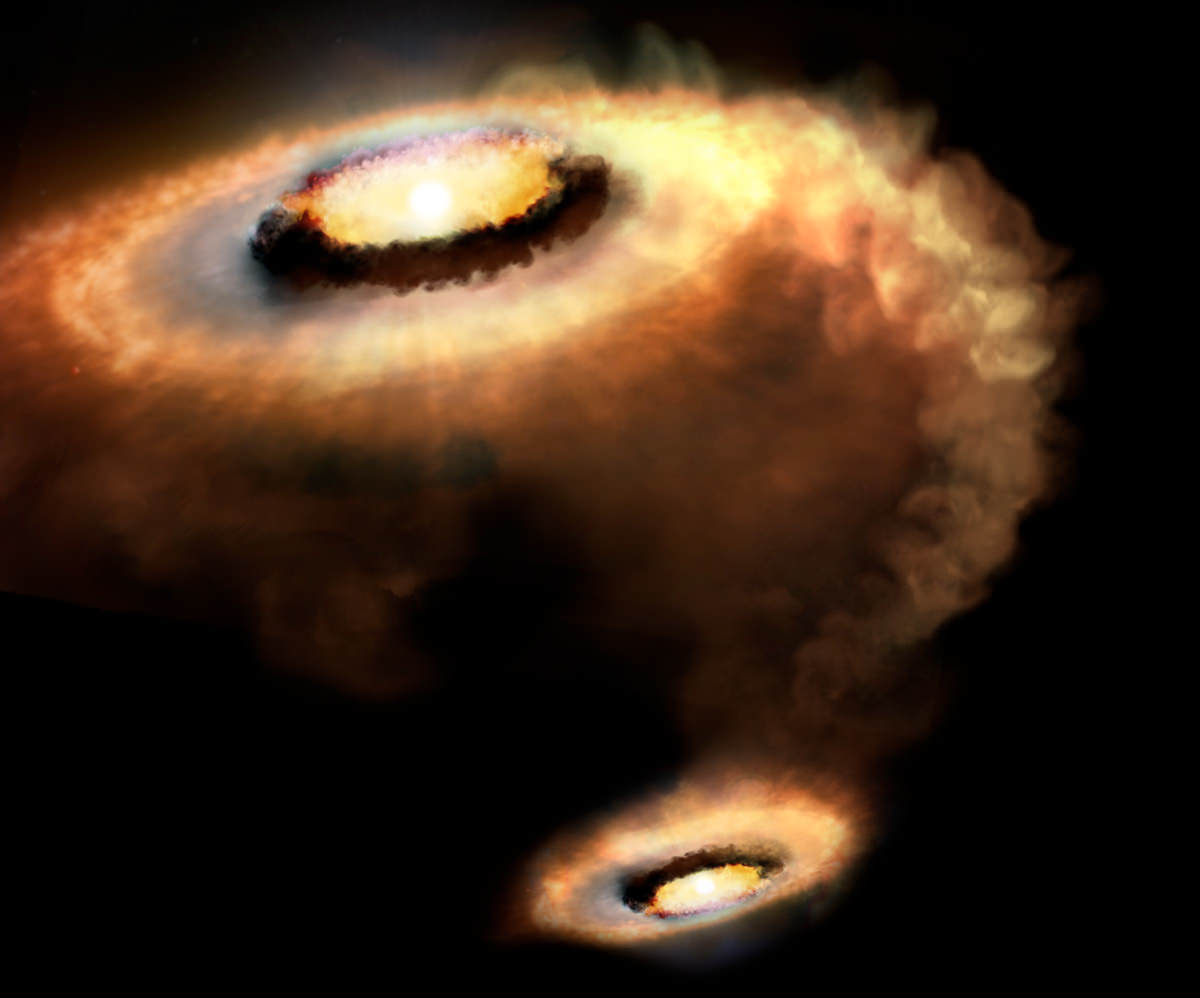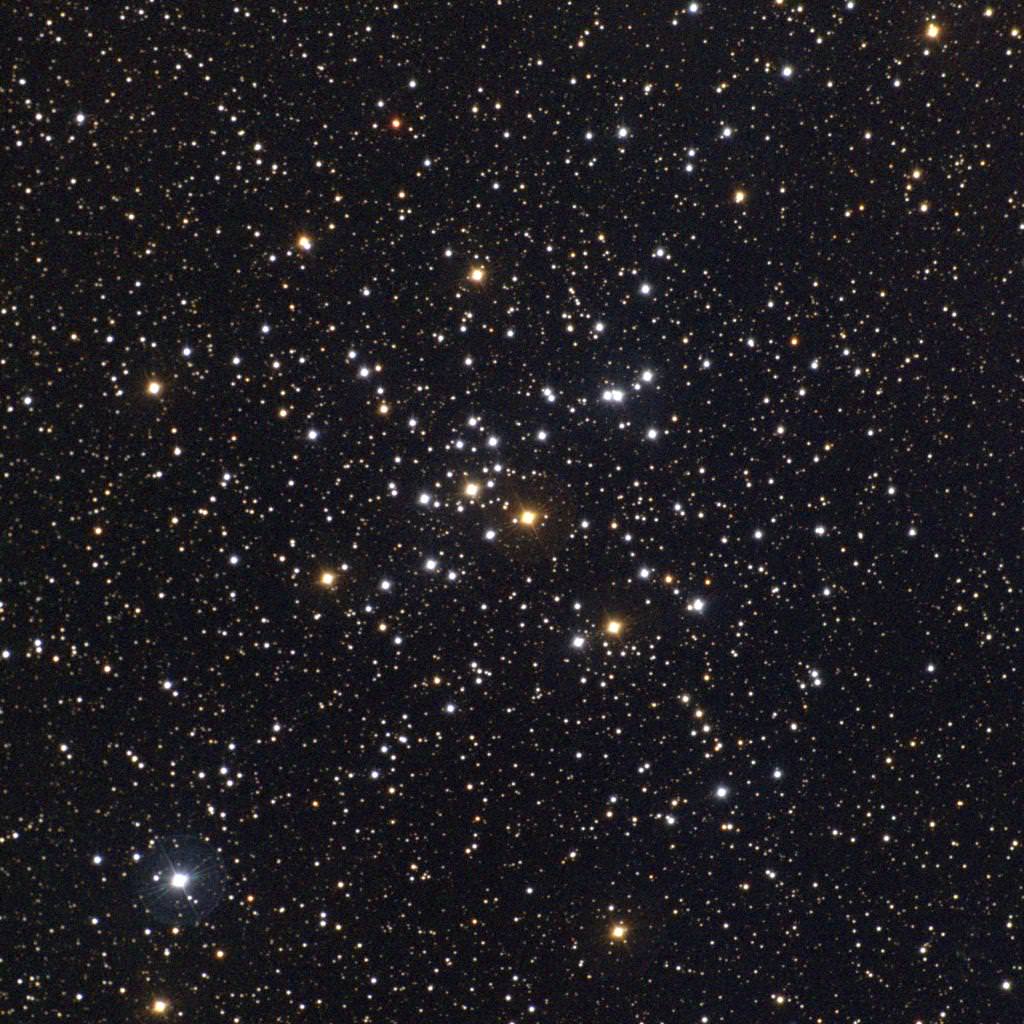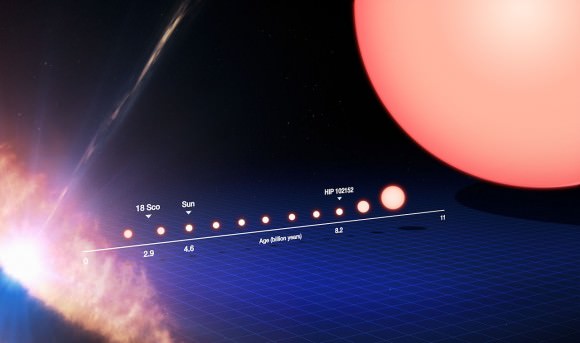[/caption]
Greetings, fellow SkyWatchers! It’s going to be an awesome week as we watch the planets – Mars, Saturn, Jupiter, Venus and Mercury – dance along the ecliptic plane. You don’t even need a telescope for this show! But that’s not all. We’ll take a look at a wealth of bright star clusters, challenging studies and lots more. I’ll see you in the back yard…
Sunday, February 19 – Today is the birthday of Nicolas Copernicus. Born in 1473, he was the creator of the modern solar system model which illustrated the retrograde motion of the outer planets. Considering this was well over 530 years ago, and in a rather “unenlightened” time, his revolutionary thinking about what we now consider natural is astounding.
Have you been observing retrograde motion while keeping track of Mars? Good for you! You may have also noticed that Mars has dimmed slightly over the last few weeks. Right now it’s around -1.0. Keep track of its many faces!
While we still have dark skies on our side, let’s head for a handful of difficult nebulae in a region just west of Gamma Monocerotis. For binoculars, check out the region around Gamma, it is rich in stars and very colorful! You are looking at the very outer edge of the Orion spiral arm of our galaxy. For small scopes, have a look at Gamma itself – it’s a triple system that we’ll be back to study. For larger scopes? It’s Herschel hunting time…
NGC 2183 (Right Ascension: 6 : 10.8 – Declination: -06 : 13 ) and NGC 2185 (Right Ascension: 6 : 11.1 – Declination: -06 : 13 ) will be the first you encounter as you move west of Gamma. Although they are faint, just remember they are nothing more than a cloud of dust illuminated by faint stars on the edge of the galactic realm. The stars that formed inside provided the light source for these wispy objects and at their edges lay in intergalactic space.
To the southwest is the weaker NGC 2182 (Right Ascension: 6 : 09.5 – Declination: -06 : 20), which will appear as nothing more than a faint star with an even fainter halo about it, with NGC 2170 (Right Ascension: 6 : 07.5 – Declination: -06 : 24) more strongly represented in an otherwise difficult field. While the views of these objects might seem vaguely disappointing, you must remember that not everything is as bright and colorful as seen in a photograph. Just knowing that you are looking at the collapse of a giant molecular cloud that’s 2400 light-years away is pretty impressive!
Monday, February 20 – Today in history celebrates the Mir space station launch in 1986. Mir (Russian for “peace”) was home to both cosmonauts and astronauts as it housed 28 long duration crews during its 15 years of service. To date it is one of the longest running space stations and a triumph for mankind. Spasiba! Today in 1962, John Glenn was onboard Friendship 7 and became the first American to orbit the Earth. As Colonel Glenn looked out the window, he reported seeing “fireflies” glittering outside his Mercury space capsule. Let’s see if we can find some…
The open cluster M41 (Right Ascension: 6 : 46.0 – Declination: -20 : 44) in Canis Major is just a quick drift south of the brightest star in the northern sky – Sirius. Even the smallest scopes and binoculars will reveal this rich group of mixed magnitude stars and fill the imagination with strange notions of reality. Through larger scopes, many faint groupings emerge as the star count rises to well over 100 members. Several stars of color – orange in particular – are also seen along with a number of doubles.
First noted telescopically by Giovanni Batista Hodierna in the mid-1500s, ancient texts indicate that Aristotle saw this naked-eye cluster some 1800 years earlier. Like other Hodierna discoveries, M41 was included on Messier’s list – along with even brighter clusters of antiquity such as Praesepe in Cancer and the Pleiades in Taurus. Open cluster M41 is located 2300 light years away and recedes from us at 34km/sec – about the speed Venus moves around the Sun. M41 is a mature cluster, around 200 million years old and 25 light years in diameter. Remember M41… Fireflies in night skies.
Tuesday, February 21 – Tonight is New Moon! Tonight let’s take a journey just a breath above Zeta Tauri and spend some quality time with a pulsar embedded in the most famous supernova remnant of all. Factually, we know the Crab Nebula to be the remains of an exploded star recorded by the Chinese in 1054. We know it to be a rapid expanding cloud of gas moving outward at a rate of 1,000 km per second, just as we understand there is a pulsar in the center. We also know it as first recorded by John Bevis in 1758, and then later cataloged as the beginning Messier object – penned by Charles himself some 27 years later to avoid confusion while searching for comets. We see it revealed beautifully in timed exposure photographs, its glory captured forever through the eye of the camera — but have you ever really taken the time to truly study M1 (Right Ascension: 5 : 34.5 – Declination: +22 : 01)? Then you just may surprise yourself…
In a small telescope, M1 might seem to be a disappointment – but do not just glance at it and move on. There is a very strange quality to the light which reaches your eye, even though initially it may just appear as a vague, misty patch. Allow your eyes to adjust and M1 will appear to have “living” qualities – a sense of movement in something that should be motionless. The “Crab” holds true to many other spectroscopic studies. The concept of differing light waves crossing over one another and canceling each other out – with each trough and crest revealing differing details to the eye – is never more apparent than during study. To observe M1 is to at one moment see a “cloud” of nebulosity, the next a broad ribbon or filament, and at another a dark patch. When skies are stable you may see an embedded star, and it is possible to see six such stars.
Many observers have the ability to see spectral qualities, but they need to be developed. From ionization to polarization – our eye and brain are capable of seeing to the edge of infra-red and ultra-violet. Even a novice can see the effects of magnetism in the solar “Wilson Effect.” But what of the spinning neutron star at M1’s heart? We’ve known since 1969 that M1 produces a “visual” pulsar effect. About once every five minutes, changes occurring in the neutron star’s pulsation affect the amount of polarization, causing the light waves to sweep around like a giant “cosmic lighthouse” and flash across our eyes. M1 is much more than just another Messier. Capture it tonight!!
Wednesday, February 22 – Today in 1966, Soviet space mission Kosmos 110 was launched. Its crew was canine, Veterok (Little Wind) Ugolyok (Little Piece of Coal); both history making dogs. The flight lasted 22 days and held the record for living creatures in orbit until 1974 – when Skylab 2 carried its three-man crew for 28 days.
Since we’ve studied the “death” of a star, why not take the time tonight to discover the “birth” of one? Our journey will start by identifying Aldeberan (Alpha Tauri) and move northwest to bright Epsilon. Hop 1.8 degrees west and slightly to the north for an incredibly unusual variable star – T Tauri.
Discovered by J.R. Hind in October 1852, T Tauri and its accompanying nebula, NGC 1555 (Right Ascension: 4 : 22.9 – Declination: +19 : 32), set the stage for discovery with a pre-main sequence variable star. Hind reported the nebula, but also noted that no catalog listed such an object in that position. His observations also included a 10th magnitude uncharted star and he surmised that the star in question was a variable. On each count Hind was right, and both were followed by astronomers for several years until they began to fade in 1861. By 1868, neither could be seen and it wasn’t until 1890 that the pair was re-discovered by E.E. Barnard and S.W. Burnham. Five years later? They vanished again.
T Tauri is the prototype of this particular class of variable stars and is itself totally unpredictable. In a period as short as a few weeks, it might move from magnitude 9 to 13 and other times remain constant for months on end. It is about equal to our own Sun in temperature and mass – and its spectral signature is very similar to Sol’s chromosphere – but the resemblance ends there. T Tauri is a star in the initial stages of birth!
T Tauri are all pre-main sequence and are considered “proto-stars”. In other words, they continuously contract and expand, shedding some of their mantle of gas and dust. This gas and dust is caught by the star’s rotation and spun into an accretion disc – which might be more properly referred to as a proto-planetary disc. By the time the jets have finished spewing and the material is pulled back to the star by gravity, the proto-star will have cooled enough to have reached main sequence and the pressure may have allowed planetoids to form from the accreted material.
Thursday, February 23 – If you have an open western horizon, then be out at twilight! Right now the speedy inner planet – Mercury – will make a brief appearance. Depending on your time zone, you might also spot a very young Moon just above it! For curiosity seekers, you can also find asteroid Vesta to the south of the Moon, along with planet Uranus to the south-east. How cool is that?!
In 1987, Ian Shelton made an astonishing visual discovery – SN 1987a. This was the brightest supernova in 383 years. More importantly, before it occurred, a blue star of roughly 20 solar masses was already known to exist in that same location within the Large Magellanic Cloud. Catalogued as Sanduleak -69-202, that star is now gone. With available data on the star, astronomers were able to get a “before and after” look at one of the most extraordinary events in the universe! Tonight, let’s have a look at a similar event known as “Tycho’s Supernova.”
Located northwest of Kappa Cassiopeia, SN1572 appeared so bright in that year that it could be seen with the unaided eye for six months. Since its appearance was contrary to Ptolemaic theory, this change in the night sky now supported Copernicus’ views and heliocentric theory gained credence. We now recognize it as a strong radio source, but can it still be seen? There is a remnant left of this supernova, and it is challenging even with a large telescope. Look for thin, faint filaments that form an incomplete ring around 8 arc minutes across.
Friday, February 24 – Tonight the slender first crescent of the Moon makes its presence known on the western horizon. Before it sets, take a moment to look at it with binoculars. The beginnings of Mare Crisium will show to the northeast quadrant, but look just a bit further south for the dark, irregular blotch of Mare Undarum – the Sea of Waves. On its southern edge, and to lunar east, look for the small Mare Smythii – the “Sea of Sir William Henry Smyth.” Further south of this pair and at the northern edge of Fecunditatis is Mare Spumans – the “Foaming Sea.” All three of these are elevated lakes of aluminous basalt belonging to the Crisium basin.
For telescope users, wait until the Moon has set and return to Beta Monocerotis and head about a fingerwidth northeast for an open cluster challenge – NGC 2250 (Right Ascension: 6 : 32.8 – Declination: -05 : 02). This vague collection of stars presents itself to the average telescope as about 10 or so members that form no real asterism and makes one wonder if it is indeed a cluster. So odd is this one, that a lot of star charts don’t even list it!
Today in 1968, during a radar search survey, the first pulsar was discovered by Jocelyn Bell. The co-directors of the project, Antony Hewish and Martin Ryle, matched these observations to a model of a rotating neutron star, winning them the 1974 Physics Nobel Prize and proving a theory of J. Robert Oppenheimer from 30 years earlier.
Would you like to get a look at a region of the sky that contains a pulsar? Then wait until the Moon has well westered and look for guidestar Alpha Monocerotis to the south and bright Procyon to its north. By using the distance between these two stars as the base of an imaginary triangle, you’ll find pulsar PSR 0820+02 at the apex of your triangle pointed east.
Saturday, February 25 – As the Moon begins its westward journey after sunset in a position much easier to observe. The lunar feature we are looking for is at the north-northeast of the lunar limb and its view is often dependent on libration. What are we seeking? “The Sea of Alexander von Humboldt”…
Mare Humboldtianum can sometimes be hidden from view because it is an extreme feature. Spanning 273 kilometers, the basin in which it is contained extends for an additional 600 kilometers and continues around to the far side of the Moon. The mountain ranges which accompany this basin can sometimes be glimpsed under perfect lighting conditions, but ordinarily are just seen as a lighter area. The mare was formed by lava flow into the impact basin, yet more recent strikes have scarred Humboldtianum. Look for a splash of ejecta from crater Hayn further north, and the huge, 200 kilometer strike of crater Bel’kovich on Humboldtianum’s northeast shore.
When the Moon begins to wester, let’s head for Beta Monocerotis and hop about 3 fingerwidths east for an 8.9 magnitude open cluster that can be spotted with binoculars and is well resolved with a small telescope – NGC 2302 (Right Ascension: 6 : 51.9 – Declination: -07 : 04). This very young stellar cluster resides at the outer edge of the Orion spiral arm. While binoculars will see a handful of stars in a small V-shaped pattern, telescope users should be able to resolve 40 or so fainter members.
Until next week, may all of your journeys be at light speed!
If you enjoy the weekly observing column, then you’ll love the book, The Night Sky Companion 2012 written by Tammy Plotner. This fully illustrated observing guide includes star charts for your favorite objects and much more!
